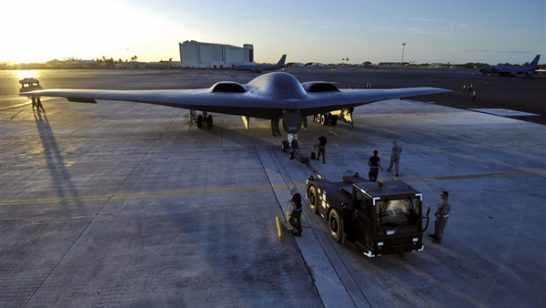
Maintaining deterrence postures has emerged as a key security challenge in the era of COVID-19. In recent weeks, officials in more than one nuclear-armed State have reassured their publics about the viability of their nuclear arsenals. A spokesperson for the UK Royal Navy noted “all required outputs are being maintained” at Faslane, home to Britain’s deterrent, following reports of personnel self-isolating. French submarine crews may not even be informed of the COVID-19 situation, according to their Naval spokesperson. The US Air Force Chief of Staff claimed in a press briefing no change to their nuclear deterrence operations. Similarly, the head of US Strategic Command stressed the pandemic had “no impact to our ability to accomplish our (deterrence) mission.”
Claims of ‘business as usual’ invite scepticism. The machinery of nuclear weapons complexes may be relatively immune from the pandemic, but the people that service them are not. Risk of transmission is especially great in the confined spaces like submarines, bombers, and missile silos that military personnel operate in. For instance, there are confirmed cases of COVID-19 at every nuclear base in the United States except one. Changes by now familiar to the working world are impacting military operations too: virtual teleconferencing, minimized on-site contact, identification of mission-critical tasks; with resources drawn from areas deemed inessential to the deterrence mission. The commander of the US Air Force Global Strike Command noted, “You’ll train a little less, but you can keep training; you can do maintenance, but you don’t have to do as much maintenance.” This is not business as usual.
There should be concern that shifting resources from tasks seen as inessential now could have safety implications down the line. Technical malfunction and human fallibility have featured across the known history of nuclear weapons programs, resulting in false alarms, accidents, and near misses. The US program, about which there exists the most declassified information, experienced a number of ‘broken arrow’ incidents during the Cold War such as missile explosions, aircraft collisions, and even the inadvertent release of nuclear weapons. The longer pandemic-containing measures are in force, the more the militaries of nuclear-armed States will face tough operational choices—choices that bear on nuclear risk.
Meanwhile, the prioritization of deterrence operations in these circumstances—and the emphasis on conveying this to the public—is fundamentally disquieting. In some circles, there is a call for a reckoning with the massive costs associated with nuclear modernization programs, ever more noticeable with the health sector buckling under extreme pressure. Beyond economics, continued reliance on nuclear weapons feels anachronistic as today’s threats are increasingly non-traditional, taking shape in cyber offensive operations or hybrid warfare, and adversaries harder to identify, with their motivations, doctrines, and capabilities varied and complex. Security, as COVID-19 underlines, has evolved. It is hard to hit many of these kinds of nails with the nuclear hammer.
Revitalizing nuclear arms control and disarmament is the only means to eliminate the lingering spectre of nuclear war. Given geopolitical tension, however, a critical short-term goal is to enhance understanding of that risk coming to fruition, intentionally or inadvertently. Proper assessment of the risk of nuclear weapon use is a prerequisite to reducing that risk. The veil of secrecy that has long surrounded nuclear weapons management must be lifted enough to ensure proper regulation, oversight, and accountability, including in all the processes linked to the deterrence ‘mission’. Enhanced use of notifications, signalling, and crisis communication channels, meanwhile, can lessen the likelihood that the mission itself will fail, especially in these extraordinary times.
In the meantime, preserving central control over nuclear arsenals during this and any other time is infinitely preferable to most alternatives. But even control cannot be taken for granted. The possibility of human failure in nuclear operations may well be higher with non-routine rotations and altered schedules of personnel. The hospitalization of British Prime Minister Boris Johnson for COVID-19 in April underlines the permeability of nuclear command and control at even the highest levels. The state of nuclear normalcy and perceived safety and security States are working so hard to uphold is far more fragile than they are willing to admit.
This is not to say that nuclear-armed States cannot effectively maintain their deterrent postures during this difficult period. But for some time now, experts and many governments have become increasingly concerned about nuclear misperception and miscalculation in an environment marked by worsening great power relations (and more so if the US and China continue their blame game over the pandemic). COVID-19 is a further wake-up call. There is no substitute for the easing of tensions and resumption of stockpile reductions. Nevertheless, States must do more to reduce the risk of any use of nuclear weapons. So long as nuclear weapons exist, the possibility remains. This is business as usual.
The opinions articulated above represent the views of the author(s) and do not necessarily reflect the position of the European Leadership Network or any of its members. The ELN’s aim is to encourage debates that will help develop Europe’s capacity to address the pressing foreign, defence, and security policy challenges of our time.
Image: Nuclear submarine HMS Vanguard arrives back at HM Naval Base Clyde, Faslane, Scotland. Flickr, Defence Images



